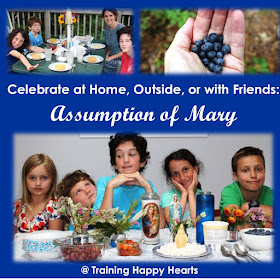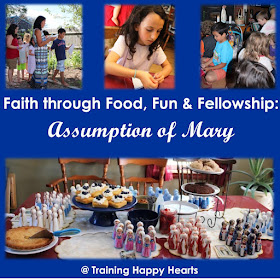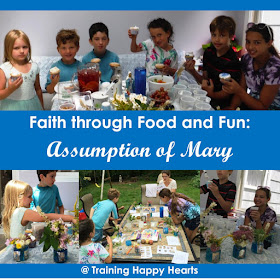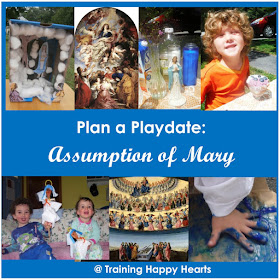1. Put Your "Big Rocks" in first.
Years ago, I heard Stephen Covey's Big Rocks story and the idea of "big rocks" has never left my brain.
Regarding the liturgical year, of course, the biggest rock is Mass. I try to go daily and to get my children to Mass at least 2-3 times a week.
On the days when the children do not go to Mass with me, we typically read the Daily Mass Readings and chat briefly about them. We also often read or listen to a brief story of a "saint of the day".
We also prioritize a weekly Holy Hour of Divine Mercy and monthly Children's Rosary, which may, technically, be more tied to prayer habits than the liturgical year, but which we consider part of "calendar" of liturgical living.
Besides that, I consider our "big rocks" the larger seasons and feasts of the liturgical year - Advent, Christmas, Lent, Easter, and Holy Days of Obligations. Thus, I make sure to reserve time for family traditions and observances during these times.
2. Add Some "Pebbles"
With the "big rocks" in the jar of life, "pebbles" fit in next.
For my family, these are smaller, personal celebrations, such as Name Days, Baptism anniversaries, feast days that have become traditional for us, etc.
On such days, we often find ourselves reading particular books, praying special prayers, eating symbolic foods, and simply enjoying living our faith.
3. Shake in Some "Sand"
Next, comes the "sand" of living the liturgical year.
For us, that means observances of saint days, monthly dedications, etc. which we enjoy through many means - audios, movies, displays, special foods, poet-teas, nature study, instant challenges, etc.
With the "big rocks" in the jar of life, "pebbles" fit in next.
For my family, these are smaller, personal celebrations, such as Name Days, Baptism anniversaries, feast days that have become traditional for us, etc.
On such days, we often find ourselves reading particular books, praying special prayers, eating symbolic foods, and simply enjoying living our faith.
3. Shake in Some "Sand"
Next, comes the "sand" of living the liturgical year.
For us, that means observances of saint days, monthly dedications, etc. which we enjoy through many means - audios, movies, displays, special foods, poet-teas, nature study, instant challenges, etc.
4. Fill Up on "Water"
Finally, we pour the "water" of liturgical living into life's cup - that is, embracing whatever fits into life without stressing us out.
And, of course, we do all this with a sense of letting the Spirit lead us, understanding that, outside of Mass and simply living as we are called to live, the rest is "extra".
The stories, the faith through food, the gatherings, the movies, the outings, the audios, the displays, the you-name-it... are all blessings that enhance our faith journey only when we can add them in without taking away from living the responsibilities of our vocations and responding with love to those around us.
Indeed, sometimes in order to keep Christ at the center of our lives, we need to let go of some of our liturgical observances and celebrations and just live the day at hand, responding to what God has put in front us.
Resources for Living Liturgically
Some go-to blogs and sites I use for inspiring our liturgical celebrations are:
There are more, too! And, I always love finding new ones, so, please do leave your favorites in the comments!
















































